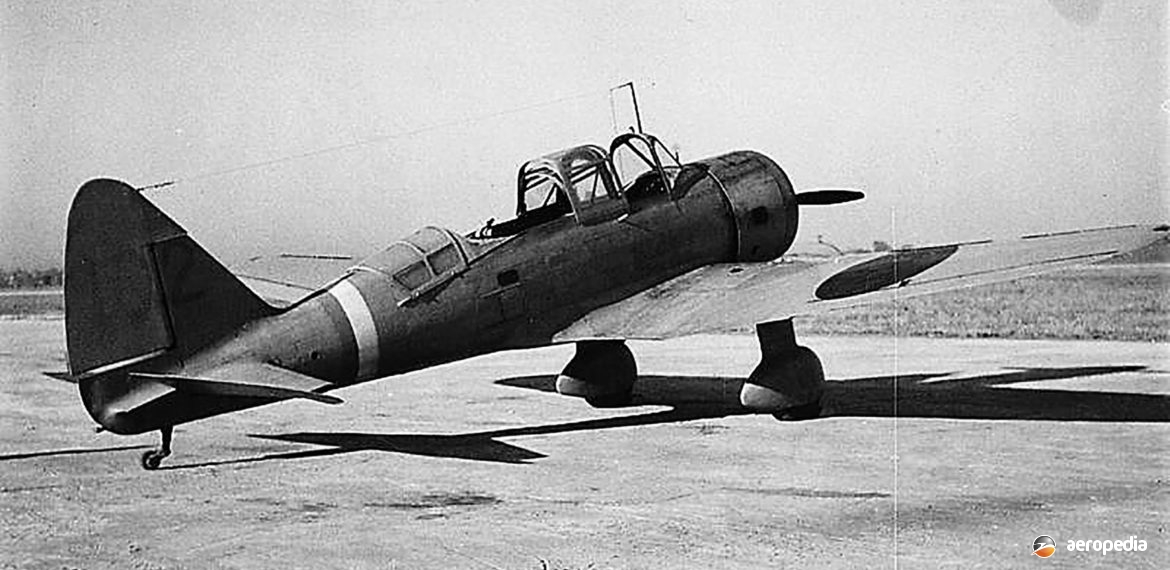Photograph:
Wartime photograph of a Ki.36 Ida in Japanese service (RAAF Museum)
Country of origin:
Japan
Description:
Two-seat army co-operation monoplane
Power Plant:
One 336 kw (450 hp) Hitachi nine-cylinder air-cooled radial engine
Specifications:
- Wingspan: 11.8 m (38 ft 8½ in)
- Length: 8 m (26 ft 3 in)
- Height: 3.64 m (11 ft 11¼ in)
- Wing area: 20 m² (215.277 sq ft)
- Max speed at 1,800 m (5,905 ft): 348 km/h (216 mph)
- Cruising speed: 236 km/h (147 mph)
- Climb to 3,000 m (9,845 ft): 6 mins 39 secs
- Service ceiling: 1,235 km (767 miles)
- Empty weight: 1,247 kg (2,749 lb)
- Loaded weight: 1,660 kg (3,660 lb)
Armament:
One forward firing fixed 7.69 mm (0.303 in) Type 89 machine gun in the engine cowling and one similar machine gun on flexible mount firing to rear; ten 12.5 kg (27.5 lb) or 15 kg (33 lb) bombs
History:
In May 1937 a specification was issued for a two-seat co-operation aircraft for the Japanese Army and to meet this Mitsubishi put forward the Ki.35 and Tachikawa the Ki.36. In the event only Tachikawa received an order for a prototype to be built, the aircraft being designed by a team lead by Ryokichi Endo. The aircraft was a conventional low-wing monoplane with fixed tailwheel undercarriage, the main wheels being covered by spats. A Hitachi Ha-13 air-cooled radial engine was chosen, driving a two-blade wooden propeller, the prototype flying for the first time on 20 April 1938.
Tests proved the aircraft met specifications but the first prototype had problems with wingtip stall and the second prototype had fixed leading-edge slots to correct the problem. A fixed forward firing machine gun was installed on the starboard engine cowling, and a flexible rear firing machine gun was installed for the observer. Light anti-personnel bombs could be carried but later in the war, when the type was used for suicide missions, one 250 kg (551 lb) or 500 kg (1,102 lb) bomb could be carried.
Production as the Army Type 98 Direct Co-operation Plane, as it became known, commenced, at the Tachikawa facility in November 1938, and production by Kawasaki commenced in 1940, late production aircraft having a two-degree wing wash-out to improve the aircraft’s stalling characteristics.
The aircraft was first used in the Sino-Japanese conflict, the machine being able to use small airstrips However, once war broke out with the United States and its Allies in the Pacific, the aircraft was no match for fighters and the aircraft was, from 1943, basically relegated to units operating in China and for training duties. It proved ideal for advanced training duties and, for this role, had all unnecessary equipment removed, it then being designated Ki.55 or Army Type 99 Advanced Trainer. Production of it for this role continued. It saw service in Thailand, Nchukuo and Cochin China, and a small group of three examples were flown against Dutch forces by the Indonesian Air Force.
Certainly it seems examples found their way to New Guinea and New Britain, but in very small numbers. One was painted in “surrender markings” at the conclusion of the war and was surrendered to Australian Army troops. The ultimate fate of this aircraft is not known but is assumed to have been abandoned in situ and later broken up.
In 1942 the Royal Thai Air Force purchased 24 examples and these became known in Thailand as Aircraft Type 89. They served as trainers from 1942 to 1950. Two examples are known to survive, one ,a Ki.55 in the Royal Thai Air Force Museum in Bangkok; and a second aircraft in a museum in China.

